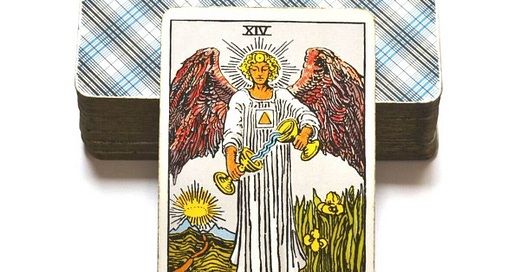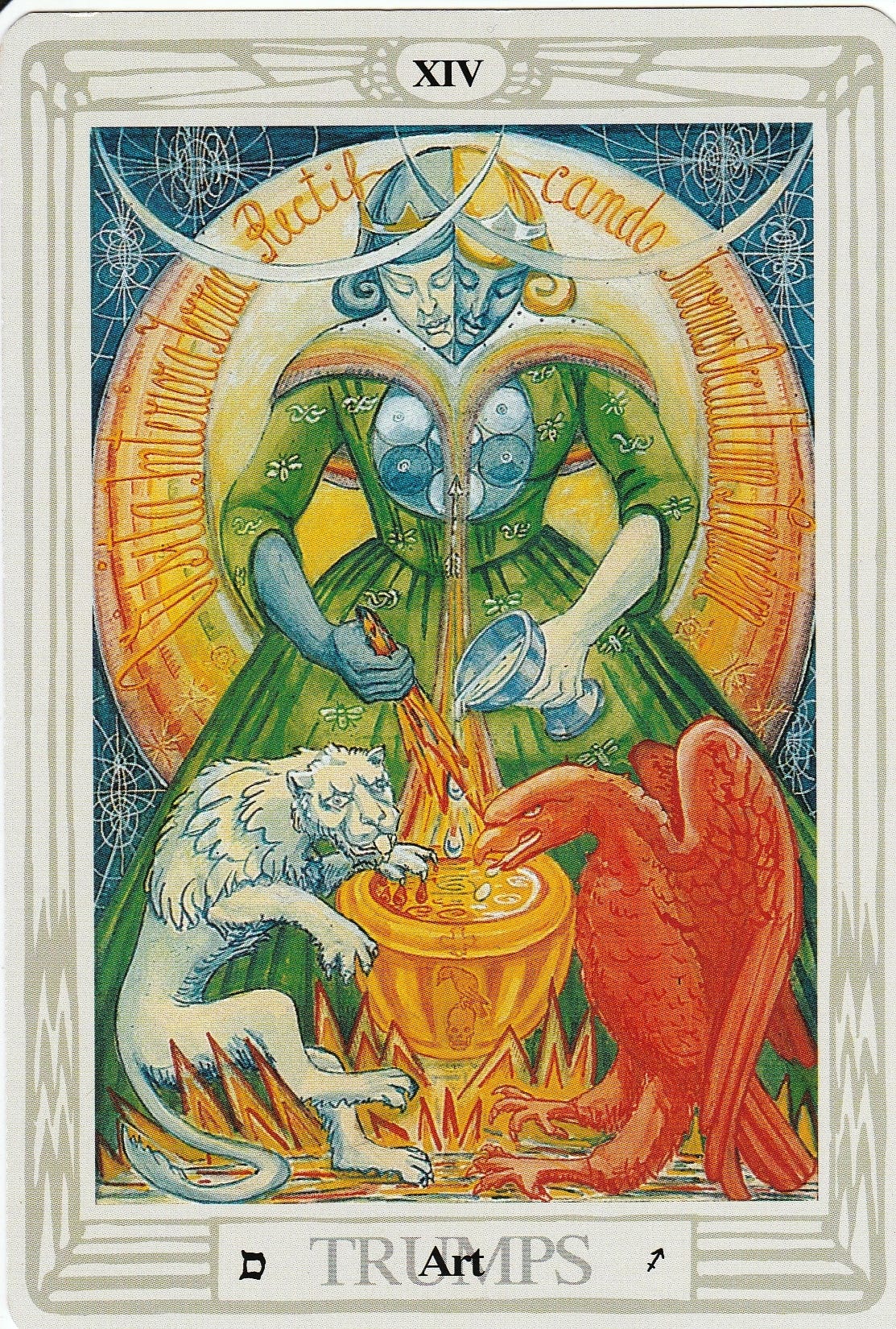If you like everything clean and clear, perfectly defined, a yes or no, white or black, right or wrong answer, then Temperance might make you a little uncomfortable. Ironically, the word temperance was hijacked by the unsuccessful Prohibition movement solidified with the 18th Amendment in 1920, prohibiting the manufacture, sales and consumption of alcoholic beverages. So even though alcohol, for better or worse (I would argue mostly worse), flows freely today, the vernacular of temperance to most people indicates abstaining from behaviors which are deemed damaging, particularly alcohol and drugs. Lately I’ve seen a lot of people talk about quitting social media as well.
But when I draw this card, I don’t see it directing me to stop what I'm doing. It is usually asking me to moderate, to slow down, to temper my emotions or behavior. Look at the figure above focusing on what is in between the two cups they are pouring, the flow of the liquid between.
Funny the word temper can mean so many things. I have a short temper, a bad temper. But also, when we temper glass, we heat it and cool it quickly to make it more durable, stronger, long lasting. Temperance in this sense is an alchemical process.
Temperance is also one of the four cardinal virtues, along with justice, strength and prudence. Originating with Plato, the four cardinal virtues have continued in a variety of forms through the Romans, to the Bible, and today.
Marcus Aurelius writes in his Meditations:
“I]t is the peculiar office of the rational and intelligent motion to circumscribe itself, and never to be overpowered either by the motion of the senses or the appetites, for both are animal; but the intelligent motion claims superiority and does not permit itself to be overpowered by the others.”
This speaks to what differentiates us from non-human animals, our ability to have self-restraint, self-control and discipline. And this leads me to think about time, the temporal. The need to give ourselves time before responding to our immediate perceived need, desire, appetite. I find myself needing to wait before I respond regularly. My immediate reaction to something unpleasant is to jump up with my emotions in full force and attack. Over the years I have tempered my responses and it has certainly calmed my mind. When I give myself time to respond, my answers are almost always more reasonable.
But what do we make of Crowley’s Art card which is in the same position as Temperance, in his Thoth deck? Alchemy, flexibility, light, integration, mutability, are common interpretations, and this brings me back to the idea of tempering, and of looking to the middle spaces of life, versus rights and wrongs, whites and blacks, ins and outs. Fire and water, the two most disparate of the four elements, almost cancel each other out. But do they?
I’m currently reading Clare Dederer’s most recent book, Monsters, and I am reminded of the conflict she moves between: the genius work of art which is awe-inspiring, and the horrible behavior of the person who created it. In particular, her chapter on Woody Allen is fascinating. This age old question of aesthetics and literary theory, the separation of the work of art, the one who creates it, and the one who beholds it, the interplay and conjunctions, became even more murky during the past twenty years with the “cancellation” of many artists for bad behavior.
This leads into what I'll talk about next week with the Devil card, but it is no coincidence Temperance and The Devil are next door neighbors in the Major Arcana. This reminder of the murky middle with Temperance is a good lead in to what might be considered the most polarizing card in the Tarot deck, The Devil.
Until next week.





